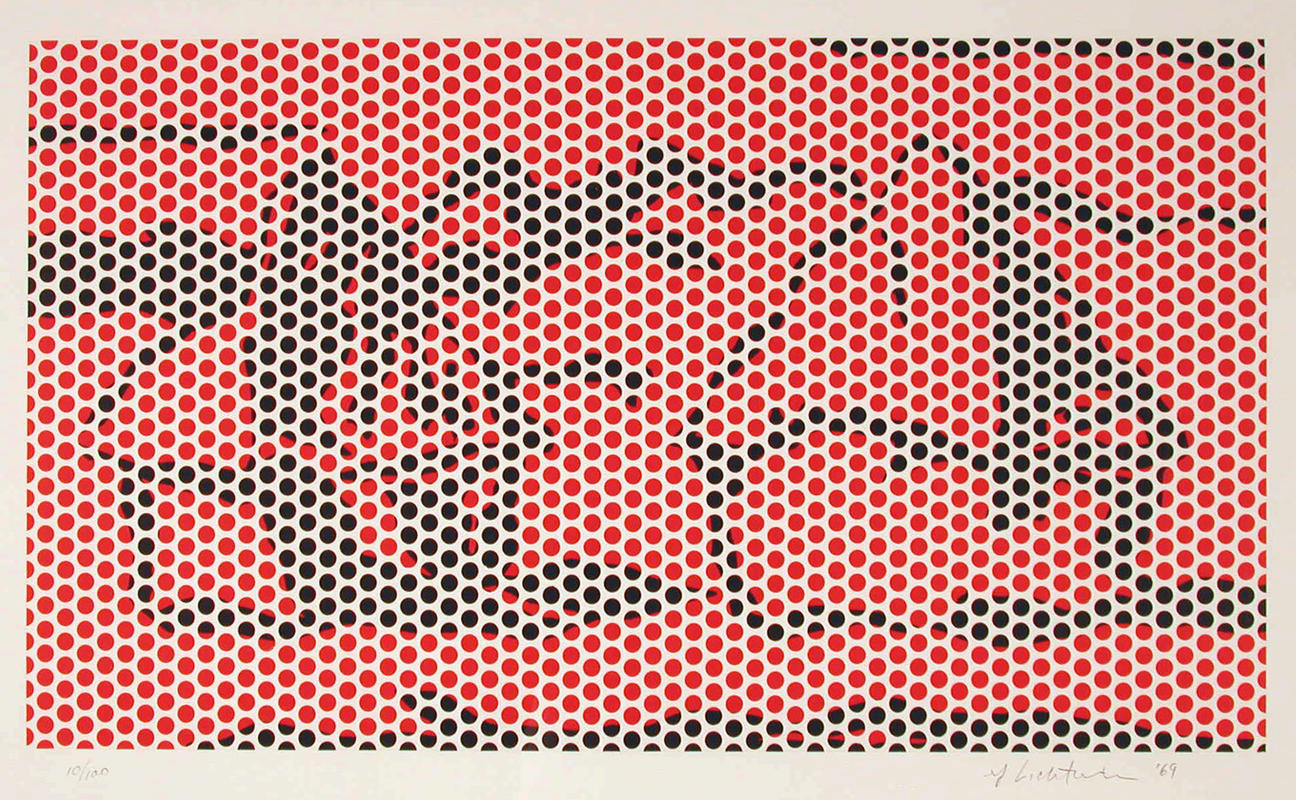More about Haystack #2
- All
- Info
- Shop

Contributor
Squint really hard at this Lichtenstein and you might recognize it as a Monet.
What do Roy Lichtenstein and Cher Horowitz have in common? They both understood Monet. As Cher explains in '90s teen film Clueless, a Monet painting must be seen as a whole, and from far away, in order to be appreciated. The painting isn’t so much about whatever it’s depicting as it is about the techniques used to illustrate it. Pop artist Roy Lichtenstein totally got that and replicated the same effect in his copy of Monet’s famous haystacks. While Lichtenstein doesn’t exactly mock Monet’s original in Haystack #2, he certainly doesn’t praise it either.
This isn’t the first time Lichtenstein referenced another artist in his work. Lichtenstein often appropriates other people’s art, and in doing so, his artwork is purposefully self-aware. His reproduction of famous, classic artworks like Monet’s Haystacks and Rouen Cathedral series served as proof of his art history knowledge to critics who disregarded pop artists simply because they didn’t portray formal subjects.
In order to understand Haystack #2, you have to understand the original Haystacks first. Monet’s Haystack series signified a major turning point in his career. At the time, no other artist had ever produced a large number of pictures concentrating on a single subject. Since Haystacks, the motif of repeated subjects in paintings became exploited by upcoming artists. Monet’s Haystacks even went so far as to inspire influential artists such as Piet Mondrian and Wassily Kandinsky. Kandinsky explained his fascination with the painting came from his inability to recognize the painting’s subject until he saw the title attached to it. Critics praised Haystacks for its authenticity and the way it calmed viewers who were concerned industrialization was threatening the rural lifestyle. The painting’s simplicity and natural imagery implied contemporary problems didn’t exist in the countryside.
More than half a century later, Roy Lichtenstein manipulated each progressively artistic move of Monet’s Haystacks in his own Haystack series. Whereas Monet used light and color to create dramatic alterations in the haystacks, Lichtenstein minimized color and light as much as he possibly could to produce the same image. While Monet’s abstraction was praised, Lichtenstein abstracted the image so much that it’s obscured from any possible praise. And while Monet soothed people’s paranoia about modernization, Lichtenstein forced people to look at that same image of nature through the lens of a modern comic book.
Looking at Haystack #2 feels as though you’re looking at the haystacks through a see-through but impermeable screen door. The large circles which make up the artwork here are exaggerated Ben Day dots inspired by the printing process used to create images in comic books. Lichtenstein’s signature use of Ben Day dots in his artwork forced fine art into the same space as mass-produced, commercialized media.
Ironically, the Ben-Day dots mimic Impressionism by creating the an optical illusion that is heavily dependent on color. Lichtenstein physically created the artwork himself, dots and all (he claims this took him ten times longer than it did for Monet to paint the original), but the systematically-placed dots give the false sense that it was done by a machine, which might be considered to “lessen” the artwork in comparison to the original.
At the same time, Haystack #2 lessened the value of the original. By putting a pop art spin on these classic haystacks, Lichtenstein forces us to realize how irrelevant the original paintings (and perhaps their idolized painter) are to the modern age. It’s almost as though Roy Lichtenstein is telling us to get with the times and stop idolizing hut-shaped stacks of dried grass. We’re right there with ya, Roy.
Sources
- Janis Henderson, Lichtenstein (Germany: Taschen, 2008)
- Karin Sagner-Deucthing, Monet: A Feast for the Eyes 1840-1926 (Italy: Taschen, 1998)
- Richard Brettel, Monet in Normandy (New York: Rizzoli International Publications, 2006)
- John Coplans, Roy Lichtenstein: From Abstract Art to Pop Art (Praeger, 1972)












